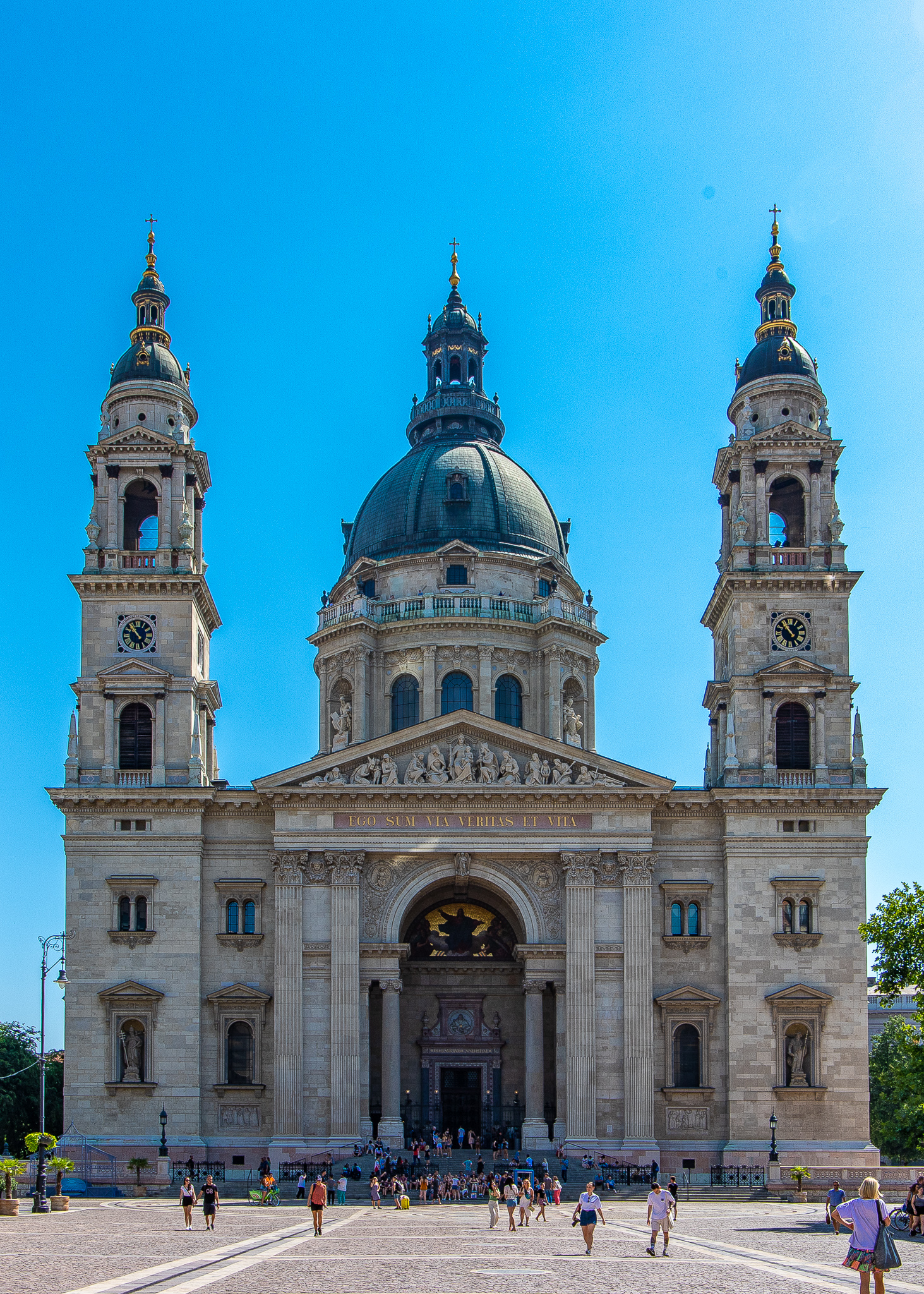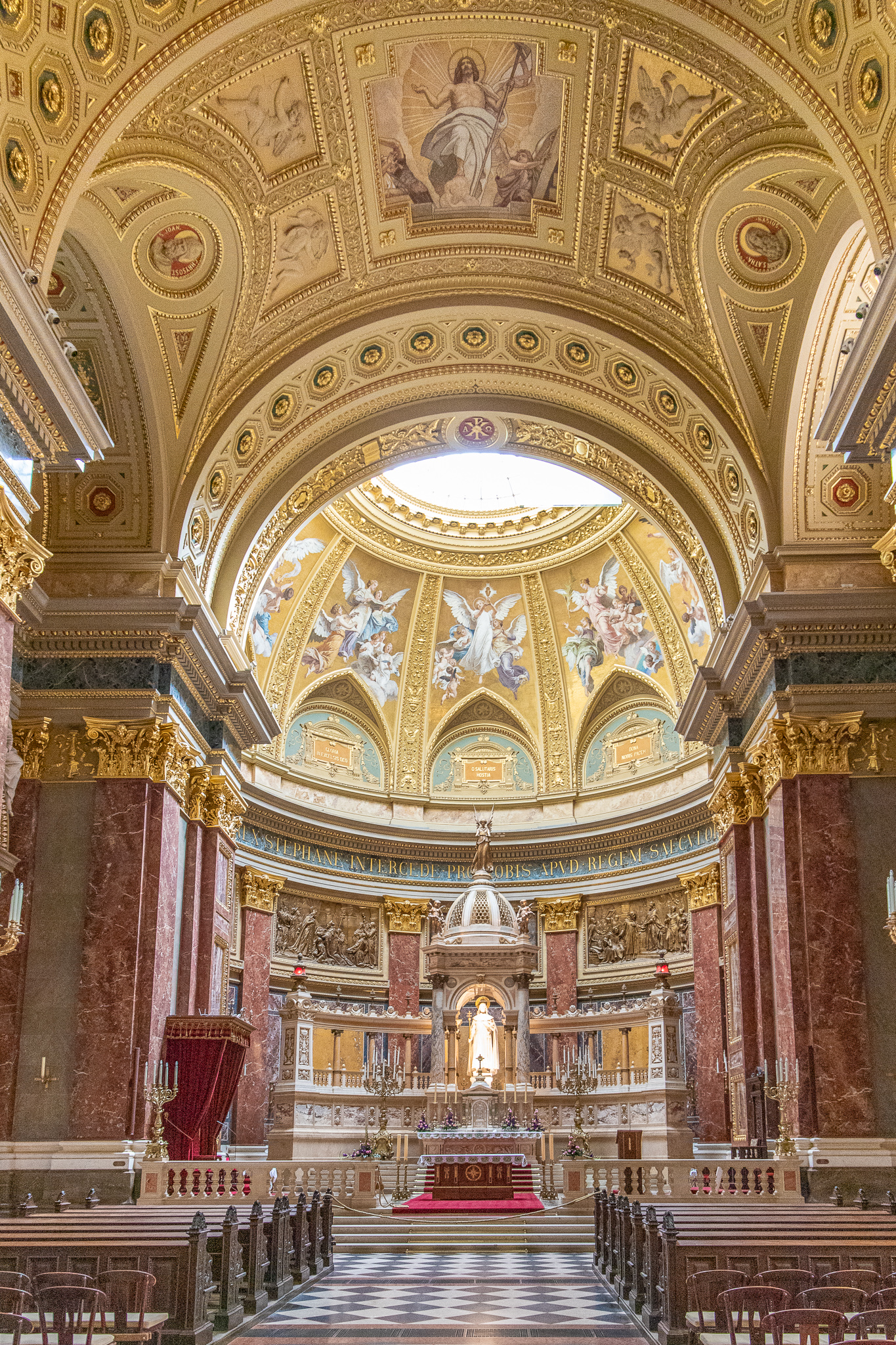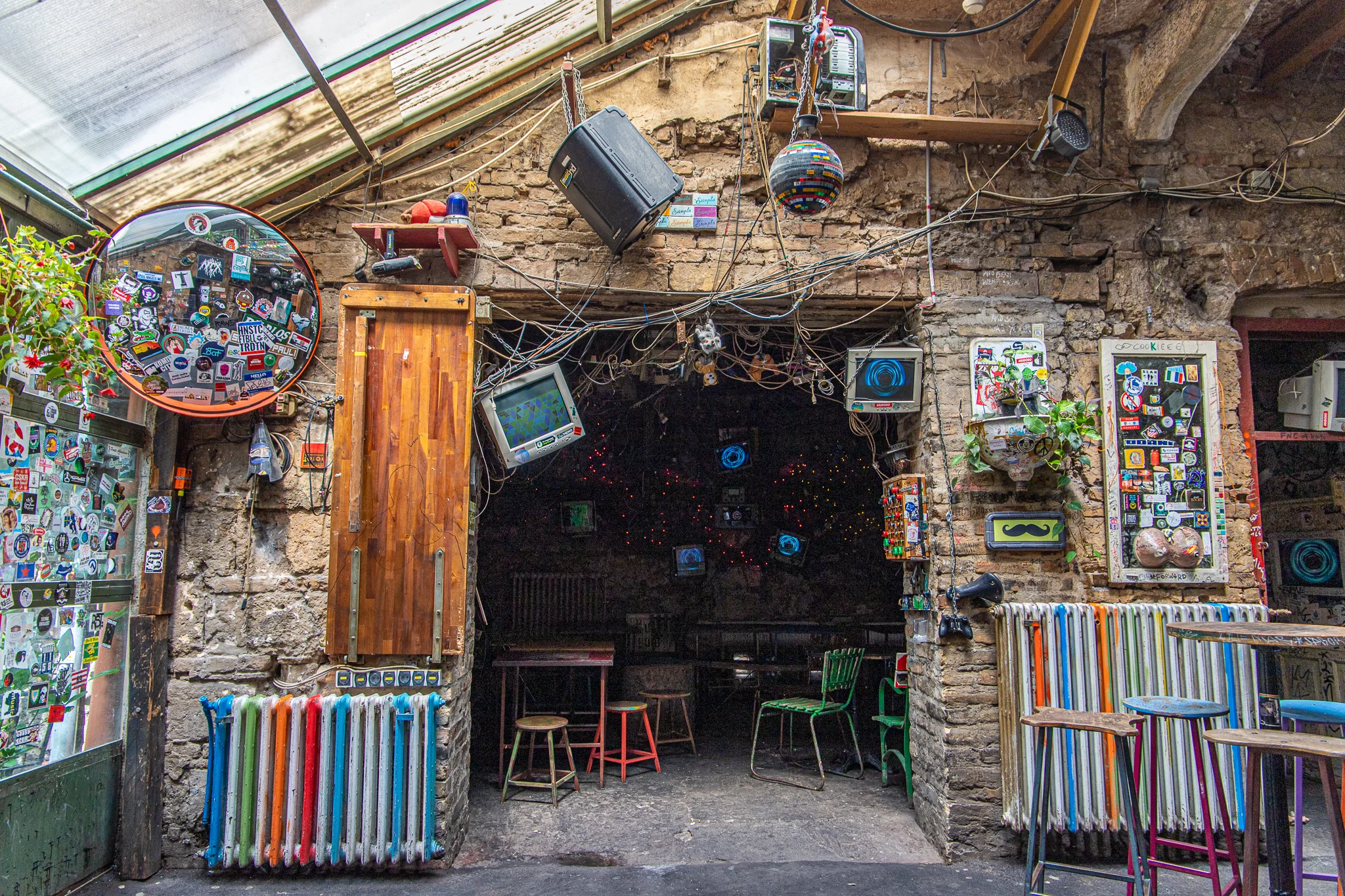We’ve ventured over the Danube to the Pest side of Hungary’s capital city. Home to the financial district, the East Side has a much wider selection of quality eateries and bars and is probably the place to be for those under the age of 30.
Any visit to Pest has to begin by wandering over Budapest’s iconic 19th centry suspension bridge. Designed by Englishman William Tierney Clark, who also designed the first suspension bridge to span the River Thames, countruction was then overseen by the Scot Adam Clark, who remained in Hungary after it was built and married one of the fine Hungarian woman. Szechenyi Chain Bridge, as the bridge is known, now connects the Castle District with the “heart” of the city and is splendid viewing both at night and during the day.
The “Chain Bridge”
There are some pretty impressive looking lions at each of the abutments which are similar in design, although predating, the bronze lions of Trafalgar Square, which we’d seen earlier in our travels.
The bridge’s lions
In 1945 the bridge was blown up by the retreating Germans during the Siege of Budapest which saw the Soviet Red Army and Romanian Army encircling Hungarian and German troops, as well as the Hungarian civilians. Following the war, the bridge was rebuilt and then reopened again in 1949.
If you continue, almost in a straight line from the bridge, you’ll be heading for one of Budapest’s real highlights, St Stephen’s Basilica. Built in a Neo-Classical style, the facade is surounded by two enormous bell towers, one of which houses Hungary's biggest bell and weighing in at more than 9 tonnes. The church’s stunning dome is accessible by both elevator and by climbing the stairs, just in case there’s a need for even more wondrous views of Budapest.
The fabulous facade of St Stephens Basilica
Having started life as a theater and bizarrely a place where animal fights were hosted, a church was only built on site in the late 1810s. Now a co-cathedral, St Stephen’s Church is recognised as one of the most important churches in Hungary and is also the equal tallest building (with the Hungarian Parliament Buildings) in Budapest at 96 metres. With current regulations prohibiting the construction of any building taller than this in Budapest, the status quo with regards building heights is meant to symbolise that worldly and spiritual thinking are of the same importance.
Inside the church, the wow factor goes up at least another couple of notches.
Facing St Stephens altar
Interior statues
Like most of central Europe, Budapest has its own extensive Jewish history, which dates back well over 1,000 years. In the early 20th century, Jews comprised close to a quarter of Budapest’s population and on the eve of World War II somewhere close to 200,000 Jews lived in the city, including refugees from Germany and Austria who deemed this a safer haven than their own countries.
Anti-Jewish policies, however, were put in place well before the beginning of the War which then saw Hungary align itself with the Axis powers. Increasingly under Nazi Germany influence, the first massacre of Jews took place as early as 1941. Things got a lot worse when Hitler ordered the German occupation of Hungary in 1944 after discovering they had begun armistice negotiations with the United States and United Kingdom. Following the beginning of their occupation, at least 25,000 Jews were immediately sent to their deaths in Auschwitz-Birkenau.
In December 1944, 70,000 Jews were sent on a death march from the Budapest Ghetto and other camps within the city to Austria. Those that survived the brutal winter conditions and indiscriminate Nazi killings en route, were then taken to various concentration camps, including Dachau and Mauthausen. The fascist Hungarian Arrow Cross Party was also responsible for shooting as many as 20,000 Jews on the banks of the Danube River between December 1944 and the end of January 1945, before throwing their bodies into the river. It is believed that when Soviet forces liberated Budapest in February 1945, less than 100,000 Jews remained in the city.
While the number of Jews in Budapest has continued to decline since World War II, mostly due to emigration, there are still a number of active synagogues including the Dohány Street Synagogue, which is situated along the border of what used to be the Budapest Ghetto. The largest synagogue in Europe and the third largest synagogue in the world after the Belz Great Synagogue in Jerusalem and Temple Emanu-El in New York, it is able to seat 3,000 people.
Dohány Street (Great) Synagogue
In addtion to the Great Synagogue, the complex also consists of the Heroes' Temple, a graveyard, a Memorial and the Jewish Museum, which was built on the site where Theodor Herzl’s was born. Herzl is known as “the spiritual father of the Jewish State”, founder of modern political Zionism and also for promoting Jewish immigration to Palestine, illustrating the extremely important ties Hungary has back to Israel.
Moving deeper into the Jewish quarter and what would’ve comprised the ghetto during World War II, it’s impossible not to stumble across Budapest’s unique ruin bars. The ruin bar phenomena began in the early 2000s when formerly abandoned buildings were converted into places in which to grab cheap drinks and eats while getting your groove on. Like most tourists who have heard of the term ruin bar, we made a beeline for the one that began it all, Szimpla Kert.
A sprawling site consisting of a seemingly random collection of watering spots and an eclectic jumble of paraphernalia, Szimpla Kert is the prototype for all other ruin bars. With graffitti paint adorning every wall and greenery sprouting from nearly every crack, it defies any normal concept of what a pub should look like.
Veronica with the wrong kind of drink in her hand
Now that’s something you don’t see every day down at the local boozer
While we weren't brave enough to venture in when the pub was really cranking, even visiting during daylight hours was enough for us to get a feel for some of the vibe that would no doubt be out in full force later on.
The colours are almost enough to bring on a headache without any alcohol
The answer to “Where do old pommel Horses go to die?”
Mega popular, I’m sure, with the hipster crowd, we shuffled out feeling like old Nanas but also thankful that there were no expectations on us to stay on to closing time at 4am.
Your run of the mill wine bar, ruin-style
Pest was certainly proving to have a whole lot going on. So much so, that we’d need another visit to make sure we’d covered everything off.











